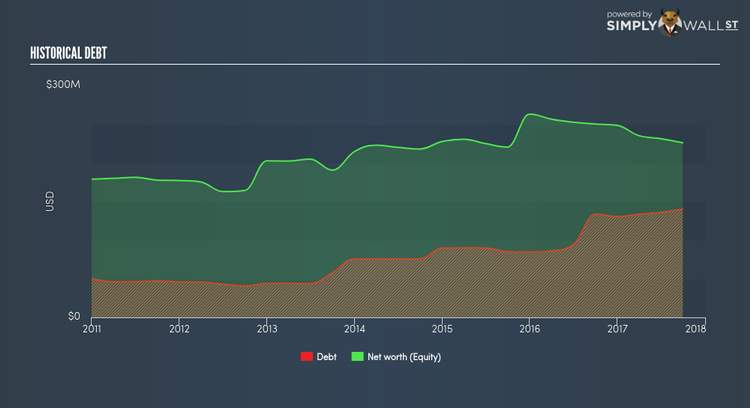What You Must Know About Pope Resources A Delaware Limited Partnership’s (POPE) Financial Strength

Pope Resources A Delaware Limited Partnership (NASDAQ:POPE) is a small-cap stock with a market capitalization of $104.25M. While investors primarily focus on the growth potential and competitive landscape of the small-cap companies, they end up ignoring a key aspect, which could be the biggest threat to its existence: its financial health. Why is it important? So, understanding the company’s financial health becomes crucial, since poor capital management may bring about bankruptcies, which occur at a higher rate for small-caps. Here are few basic financial health checks you should consider before taking the plunge. Though, given that I have not delve into the company-specifics, I’d encourage you to dig deeper yourself into POPE here.
Does POPE generate an acceptable amount of cash through operations?
POPE has built up its total debt levels in the last twelve months, from $84.7M to $130.4M – this includes both the current and long-term debt. With this increase in debt, POPE’s cash and short-term investments stands at $2.9M , ready to deploy into the business. Moreover, POPE has generated cash from operations of $5.1M over the same time period, leading to an operating cash to total debt ratio of 0.04x, meaning that POPE’s current level of operating cash is not high enough to cover debt. This ratio can also be interpreted as a measure of efficiency as an alternative to return on assets. In POPE’s case, it is able to generate 0.04x cash from its debt capital.
Does POPE’s liquid assets cover its short-term commitments?
With current liabilities at $21.0M liabilities, it appears that the company has maintained a safe level of current assets to meet its obligations, with the current ratio last standing at 1.53x. Generally, for paper and forest products companies, this is a reasonable ratio since there is a bit of a cash buffer without leaving too much capital in a low-return environment.
Does POPE face the risk of succumbing to its debt-load?
With a debt-to-equity ratio of 62.05%, POPE can be considered as an above-average leveraged company. This is not uncommon for a small-cap company given that debt tends to be lower-cost and at times, more accessible. No matter how high the company’s debt, if it can easily cover the interest payments, it’s considered to be efficient with its use of excess leverage. A company generating earnings after interest and tax at least three times its net interest payments is considered financially sound. In POPE’s case, the ratio of 1.49x suggests that interest is not strongly covered, which means that debtors may be less inclined to loan the company more money, reducing its headroom for growth through debt.
Next Steps:
Are you a shareholder? At its current level of cash flow coverage, POPE has room for improvement to better cushion for events which may require debt repayment. However, the company exhibits an ability to meet its near term obligations should an adverse event occur. Given that its financial position may change. I recommend keeping abreast of market expectations for POPE’s future growth on our free analysis platform.
Are you a potential investor? Although short-term liquidity isn’t an issue, POPE’s large debt ratio on top of poor cash coverage may not be what you’re after in an investment. Though, keep in mind that this is a point-in-time analysis, and today’s performance may not be representative of POPE’s track record. You should continue your analysis by taking a look at POPE’s past performance analysis on our free platform to conclude on POPE’s financial health.
To help readers see pass the short term volatility of the financial market, we aim to bring you a long-term focused research analysis purely driven by fundamental data. Note that our analysis does not factor in the latest price sensitive company announcements.
The author is an independent contributor and at the time of publication had no position in the stocks mentioned.

